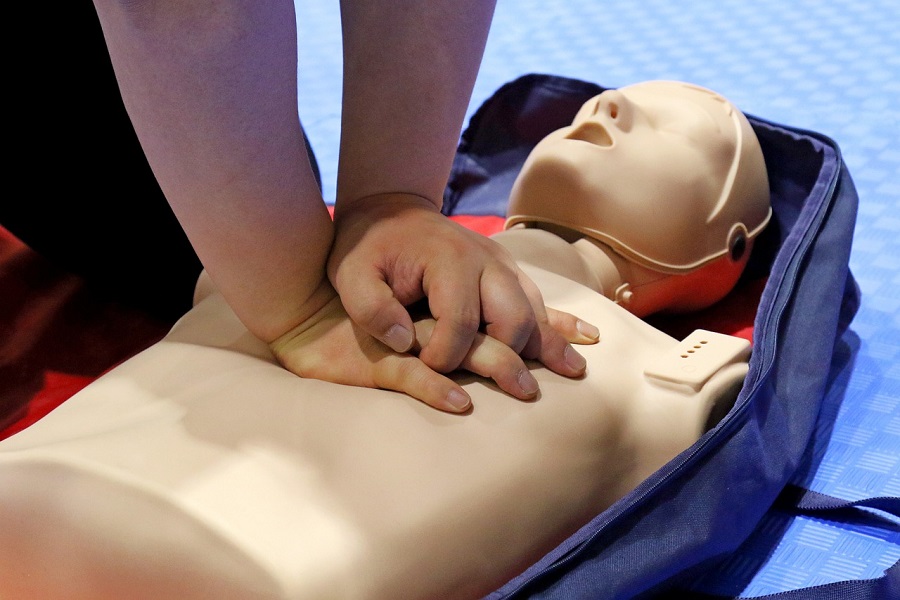A Vital Skill That Can Save Lives
I absolutely believe that EVERYONE should know how to administer CPR. Just learning a few basic skills can be the difference between life and death, and even if we only managed to save one individual in our lifetime, it would be worth it. Even in a situation that seems like a lost cause, keeping somebody oxygenated until the emergency services arrive can save a life. In a gym environment, where people are working out intensively, the odds of encountering a CPR – required situation are slightly heightened.
What is CPR?
Cardiopulmonary Resuscitation (CPR) is a critical emergency procedure that can be the difference between life and death in situations where someone’s heart has stopped beating or they have stopped breathing. Learning how to administer CPR effectively can empower individuals to respond swiftly and confidently during emergencies, potentially saving lives. In this article, we’ll explore the steps involved in how to administer CPR and discuss how this procedure can be a crucial intervention in emergency situations.
Understanding CPR
CPR is a combination of chest compressions and rescue breaths designed to keep oxygenated blood flowing to the brain and other vital organs when the heart has stopped pumping. This intervention is essential in situations such as cardiac arrest, drowning, or choking, where immediate action is necessary to sustain life until professional medical help arrives. If a person has stopped breathing for more than 7 or more minutes, the chances of survival decrease rapidly, while it could take longer than seven minutes for emergency responders to arrive.
Step-by-Step Guide on how to Administer CPR
1. Assess the Scene: Before approaching the victim, ensure the area is safe for both you and the individual requiring assistance. Look for any potential hazards or dangers, such as traffic or electrical wires, and address them before proceeding.
2. Check Responsiveness: Gently tap the victim and ask loudly, “Are you okay?” If there is no response, proceed to the next step.
3. Call for Help: If you’re alone, call emergency services immediately or instruct someone nearby to do so. Time is of the essence in these situations, and the sooner professional help arrives, the better the chances of survival.
4. Open the Airway: Place the victim on their back on a firm surface. Tilt their head backward gently by lifting the chin with one hand while pushing down on the forehead with the other hand to open the airway.
5. Check for Breathing: Look, listen, and feel for signs of breathing by placing your ear near the victim’s mouth, observing the rise and fall of their chest, and feeling for exhaled breath on your cheek.
6. Start Chest Compressions: If the victim is not breathing or only gasping, begin chest compressions immediately. Place the heel of one hand on the center of the victim’s chest, between the nipples. Place the other hand on top of the first and interlock your fingers. Keep your arms straight, position your shoulders directly above your hands, and compress the chest at least 2 inches deep and at a rate of 100-120 compressions per minute. Ultimately for this step, aim for 5 equal chest compressions.
7. Deliver Rescue Breaths: After 5 chest compressions, tilt the victim’s head back, pinch their nose shut, and give 2 rescue breaths, each lasting about two seconds, while watching for the chest to rise.
8. Continue CPR: Alternate between 5 chest compressions and 2 rescue breaths until the victim starts breathing, help arrives, or you are too exhausted to continue. Share the burden with somebody else if you’re not alone or swap roles when you need to.
Why CPR is Vital
Administering CPR promptly can make a significant difference in the outcome of a cardiac arrest or other life-threatening emergencies. When the heart stops pumping blood effectively, oxygenated blood does not reach the brain and other vital organs, leading to irreversible damage or death within minutes. CPR helps circulate oxygenated blood manually, buying precious time until advanced medical care can be provided.
The Importance of Proper Training
While the basic steps of CPR are relatively simple, proper training is essential to ensure effectiveness and minimise the risk of injury to the victim. Training courses, such as those offered by the British Heart Association, St John’s Ambulance service or the Red Cross, provide hands-on instruction, practice with CPR mannequins, and guidance on responding to various emergency scenarios. These courses also cover topics such as the use of automated external defibrillators (AEDs), which can further improve the chances of survival in cardiac arrest cases.
Conclusion
It is well worth learning how to administer CPR and it is a vital skill that can save lives in emergencies, where every second counts. By following the simple steps outlined above and obtaining proper training, individuals can become empowered to respond effectively to cardiac arrests, drownings, and other life-threatening situations. Whether at home, at work, or in public spaces, knowing how to perform CPR can make a critical difference in preserving life until professional medical help arrives.
Remember – FIVE chest compressions then TWO breaths – and repeat this until the emergency services arrive.
